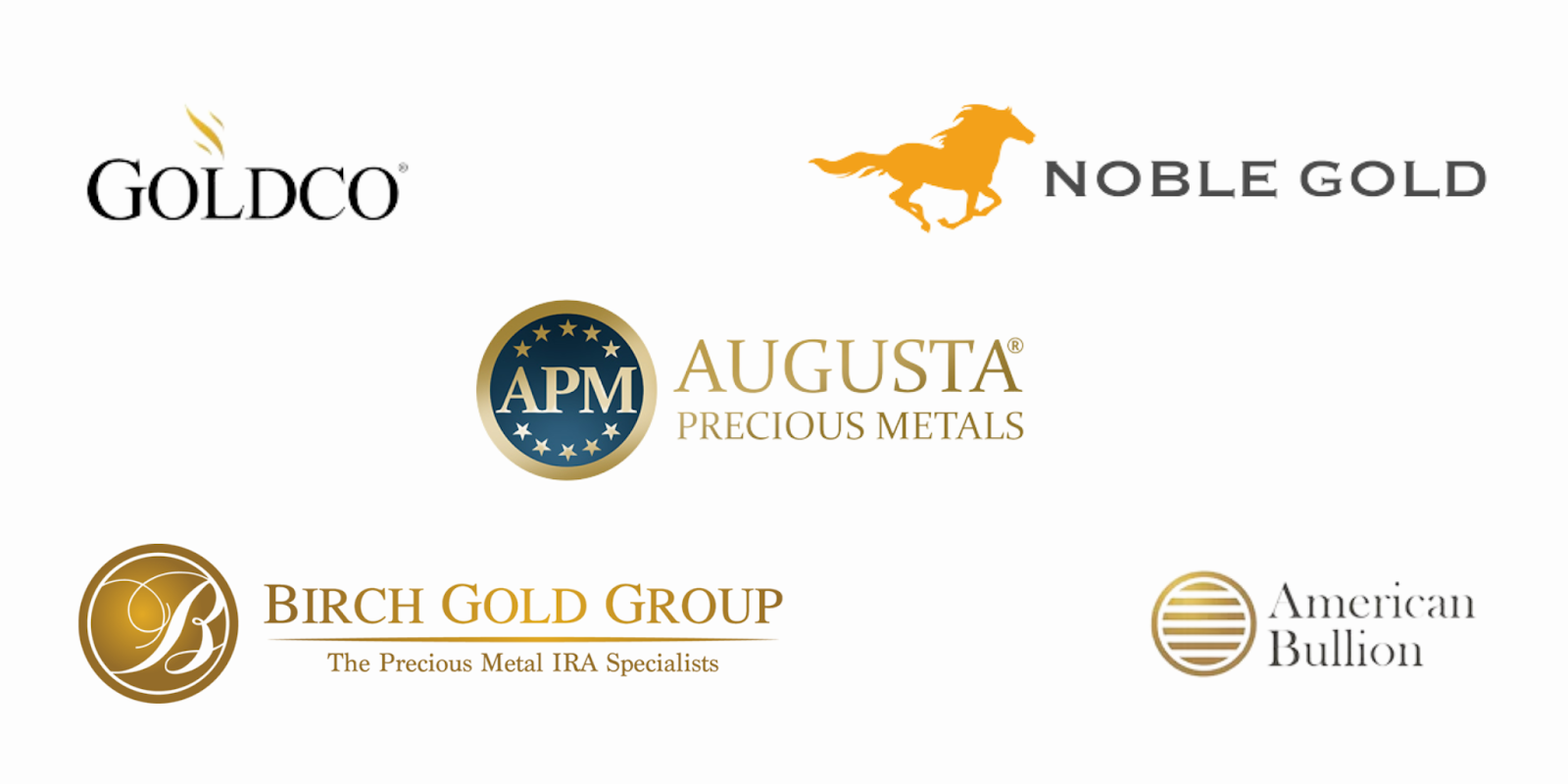If you’ve ever asked yourself how to move your 401(k) to a gold IRA without penalty, you’re not alone. You have two ways to do so: either through a direct or an indirect rollover. Choosing a direct rollover means that you must request your 401(k) administrator to transfer your retirement funds from your 401(k) to your new gold IRA. Conversely, choosing an indirect rollover means that you withdraw your 401(k) funds and deposit them into an IRS-approved gold IRA without custodian intervention. If you do this within 60 days of receiving your funds, you won’t have to pay the 10% early withdrawal penalty, even if you’re under 59 ½.
The first option is preferable since it avoids the risk of paying a penalty completely. However, there may be fees involved which you can avoid by doing the process yourself. In either case, it’s critical to work with a trusted custodian to ensure everything works out smoothly.
If you’re still looking for a reputable gold IRA custodian to transfer your funds, I recommend creating an account with Augusta Precious Metals. It has an A+ rating on BBB and offers free gold IRA guide, free shipping on eligible purchases, and no management fees, making it worthwhile to transfer your 401(k) funds with them.
If you’re under 59 ½ and you want to invest in a tangible asset like gold for your retirement but already have part of your savings in a 401(k), you might think that there’s no way to use those funds without paying the unwanted 10% early withdrawal fee to the IRS. So you may have found yourself thinking about how to move your 401(k) to a gold IRA without penalty.
Is that even possible?
Luckily for you, it is! And it’s also easy, but you must be careful because, if you do it wrong, you’ll end up paying the 10% penalty. By the end of this post, you’re going to know exactly how to transfer your funds, the rules and regulations that apply, contribution limits and more. So let’s get started on your new investment journey!
What Is A Gold IRA?
A gold IRA is an individual retirement account that enables you to invest in physical gold bullion, such as gold bars and coins. If you also want to invest your funds in silver, some gold IRAs also offer custody of other precious metals like silver, palladium, and platinum.
There are three types of gold IRAs: Traditional, Roth, and SEP Gold IRAs. These work just like normal Traditional, Roth, and SEP Gold IRAs, except that they hold a physical or tangible asset like gold or another precious metal instead of stocks and bonds.

What Is A 401(k)?
Contrary to an IRA, which is an individual retirement savings vehicle, a 401(k) is an employer-sponsored retirement savings plan. It allows employees to contribute a portion of their wages to individual accounts, which may be matched by the employer. The contributions are usually deducted from your paycheck either before or after income taxes are applied, depending on whether it’s a Traditional 401(k) or a Roth 401(k).
Step-By-Step Guide To Move Your 401(k) To Gold IRA Without Penalty
Moving your 401(k) to a gold IRA without penalty can be done in six steps:
#1 Find An Experienced And Trusted Custodian

There may be hundreds of IRA custodians out there, but only a few are worth your time and savings. Before moving your funds from your 401(k), you must look for an experienced custodian offering gold IRA rollovers.
#2 Open A Gold IRA
The next step is to open a self-directed gold IRA with your chosen custodian. This will require filling out some standard paperwork and providing personal information like name, address, Social Security Number (SSN), and more.
#3 Request A Direct Rollover
The best way to avoid penalties when you move your funds into your new gold IRA, is to request a direct rollover from your 401(k) plan administrator. The administrator will handle the transfer with your custodian, which will happen directly without you making any withdrawals. So, no early withdrawal, no problem!
An alternative route is to do an indirect rollover, where you first make a withdrawal from your 401(k) and deposit the funds in the gold IRA yourself. However, if you take too long to deposit (more than 60 days after receiving your fund, you’ll have to pay a fee to the IRS.
Once you complete this step, your funds will be in your gold IRA, but you still won’t have your gold..
#4 Purchase Your Gold Bullion
After receiving your funds in your new gold IRA, you can now purchase which gold investment you want to hold. You can invest in physical gold, such as bars or coins, or invest in other precious metals, like silver.
#5 Store Your Gold In A Secured Depository
You can’t just buy and store your gold for your gold IRA at home. You’re required to keep them in an IRS-approved depository to avoid damages or theft. You can choose which depository you want to secure your gold, but your custodian usually recommends what’s best for you.
#6 Track Your Gold Investments
One of the key essentials to increase your gains in your investments is to monitor them regularly, especially when there is significant news that could affect the economy. To ensure that it’s performing according to your retirement goals, you should keep up to date on current market trends and adjust your investments regularly when needed.
Moving your 401(k) to a gold IRA without penalty is relatively straightforward. The simplest way to accomplish it is to choose a direct rollover. In this case, you can leave everything in the hands of your custodian and your current 401(k) administrator, albeit in exchange for a service fee. If you don’t want to pay fees, you can still do the whole thing yourself as long as you take care to choose your investments beforehand to avoid the risk of not depositing your gold in your new Gold IRA on time.
Tax Implications Of Moving Your 401(k) To a Gold IRA
Moving funds from one retirement account, like a 401(k), to a gold IRA is called a rollover. The tax implications and whether or not you pay the penalty when you roll over your 401(k) to a gold IRA depends on the particular type of gold IRA you choose and the type of 401(k) you have.
If you have a Roth 401(k), it’s all smooth sailing because you already paid income tax on the amount you saved, and there are no penalties or extra taxes to worry about, except for those of any gains made from your investment. But if you have a Traditional 401(k), there’s a risk that you’ll have to pay income tax and even a penalty if you don’t do it right.
For example, you can roll over a traditional 401(k) to a Roth Gold IRA, but you’ll have to pay income tax on the amount you convert. This is because a traditional 401(k) is funded with pre-tax dollars, while a Roth IRA is funded with after-tax money. The rollover is considered taxable by the IRS, and the amount you convert will be added to your taxable income for the year.
On the other hand, if you move it to a Traditional Gold IRA, you won’t pay income tax since that account is also tax-deferred.
Tax Benefits Of Moving Your 401(k) To A Gold IRA
When you invest in physical gold, your earnings or gains aren’t taxed as income but as capital gains because the IRS considers gold coins and gold bullion as collectible. This means it’s taxed at a maximum rate of 28%. But if you invest it in a gold IRA, it’s taxed as income, so the rate will depend on your income bracket.
Here’s a table with the current taxable income brackets in the US.
| Tax rate | Taxable income bracket for single filers | Taxable income bracket for married couples filing jointly | Taxable income bracket for head of household filers | Taxable income bracket for married couples filing separately |
| 10% | $0 to $10,275 | $0 to $20,550 | $0 to $14,650 | $0 to $10,275 |
| 12% | $10,276 to $41,775 | $20,551 to $83,550 | $14,651 to $55,900 | $10,276 to $41,775 |
| 22% | $41,776 to $89,075 | $83,551 to $178,150 | $55,901 to $89,050 | $41,776 to $89,075 |
| 24% | $89,076 to $170,050 | $178,151 to $340,100 | $89,051 to $170,050 | $89,076 to $170,050 |
| 32% | $170,051 to $215,950 | $340,101 to $431,900 | $170,051 to $215,950 | $170,051 to $215,950 |
| 35% | $215,951 to $539,900 | $431,901 to $647,850 | $215,951 to $539,900 | $215,951 to$323.925 |
| 37% | $539.901 or more | $647.851 or more | $539.901 or more | $323.926 or more |
So, from looking at this table, you can see that it sometimes makes sense to do a rollover, and sometimes it makes more sense to invest your money in gold without putting it in an IRA.
How Do I Know If I Should Move My 401(k)?
If you expect to earn less now than during retirement, moving your savings to a traditional gold IRA would make sense since you could end up paying fewer taxes in retirement. If it’s the opposite, paying taxes now by rolling your savings over to a Roth Gold IRA makes more sense. But if you expect to have a significant income today and in retirement, investing your money in physical gold without using an IRA may be better (as in, cheaper in terms of taxes) since your gains will be taxed at a maximum of 28%.
For example, if you’re single and you earn over $170,050, it’s not wise to buy gold and put it in a gold IRA, since the earnings from your investment will be taxed at a higher rate than 28%.
There are two other benefits of moving your 401(k) to a gold IRA:
- First, a gold IRA gives you control over your investment decisions. You can choose which type of gold or other precious metals to invest in and when to buy and sell.
- Second, gold is a tangible asset which has increased its value for decades. Although its price may be volatile in the short term, holding it can still be profitable in the long term.
That said, keep in mind that if you’re rolling over a traditional 401(k) to a Gold IRA, there’s a risk of incurring an early withdrawal fee if you do an indirect rollover and take more than 60 days to deposit your funds into the IRA.
Additional IRS Rules And Regulations When You Convert Your 401(k) To A Gold IRA
Besides the early withdrawal rules that apply to gold IRA rollovers, you should note that you’re limited to one rollover per year per gold IRA you own. In other words, if you did a rollover from your 401(k) to a gold IRA, you’ll have to wait 1 year (365 days) to make your second deposit. This rule applies to both direct and indirect rollovers, and violating this rule may result in additional taxes and penalties.
Eligibility Requirements Of A Gold IRA Rollover
Before you can do a gold IRA rollover, you must have an existing retirement account such as 401(k), 403(b), and/or an IRA. However, there are other conditions you mus meet to be eligible:
- Your current retirement account must be in good standing (no outstanding loans or penalties).
- You must have an open account with a gold IRA custodian. This is regardless of whether or not you’re choosing a direct or indirect route.
- If you’re going down the direct route, you must ensure your custodian offers gold IRA rollover as part of its services.
Contribution Limits Of A Gold IRA
Like traditional IRAs, there are also contribution limits when it comes to a gold IRA. The following table summarizes those limits.
| Age | Contribution limit* | Eligibility | |
| Traditional Gold IRA | Under 50 years old | $6,500 | Anyone with earned income. |
| 50 years old and older | $7,500 | Anyone with earned income. | |
| Roth Gold IRA | Under 50 years old | $6,500 | Income must be under $153,000 for individuals and $228,00 for married couples filing jointly. |
| 50 years old and older | $7,500 | Income must be under $153,000 for individuals and $228,00 for married couples filing jointly. | |
| SEP Gold IRA | N/A | Up to 25% of your self-employed compensation or $66,000 (whichever is greater) | Must be self-employed or be a small business owner with 1 or more employees. |
If you go over these contribution limits, you’ll have to pay an additional 6% tax on the excess amount and any earnings from it, every year the excess amount stays in your account. This means you’ll lose some of the tax benefits of your gold IRA account, such as tax-deferred or tax-free growth of your investments.
Additionally, you’ll have to file an additional form (Form 5329) to report and pay these additional taxes on your tax return, and we all know how much fun filling out yet another form can be! So it’s best to keep your contributions to the given limit when you move your 401(k) to a gold IRA.
Best Gold IRA Companies For You To Transfer
As we discussed, moving your 401(k) to a gold IRA starts with choosing a gold IRA company to open an account. There are quite a few of them out there, so we thought we might give you a bit of a head start to simplify it for you! Here are our top-5 picks for the best gold IRA company according to their unique and overall features.

- Augusta Precious Metals—Best overall gold IRA.
- American Bullion—Best for secure storage options.
- Noble Gold —Best for low minimum investment and gold IRA packages.
- Birch Gold Group—Best for precious metals educational resources.
- Goldco—Best for free silver bonus.
All of the companies listed above are trust-worthy gold IRA companies that will help you move your 401(k) to a gold IRA smoothly and without paying penalties.
In Summary
When moving your 401(k) to a gold IRA without penalty, you can choose between a direct or indirect rollover. When it comes to a direct rollover, you have to work with your 401(k) plan administrator to transfer your funds directly to your chosen gold IRA custodian. With an indirect rollover, you have to withdraw your 401(k) funds and transfer them to a gold IRA by yourself within 60 days, or you’ll be taxed with a 10% early withdrawal fee.
Transferring your 401(k) funds to a gold IRA to purchase physical gold provides diversification, tax benefits, and a hedge against inflation for your retirement portfolio. However, you should still be aware of its potential risks and fees before you make any investment decisions.
If you’re still looking for a reputable gold IRA custodian to transfer your funds, I recommend creating an account with Augusta Precious Metals. It has an A+ rating on BBB and offers free gold IRA guide, free shipping on eligible purchases, and no management fees, making it worthwhile to transfer your 401(k) funds with them.


